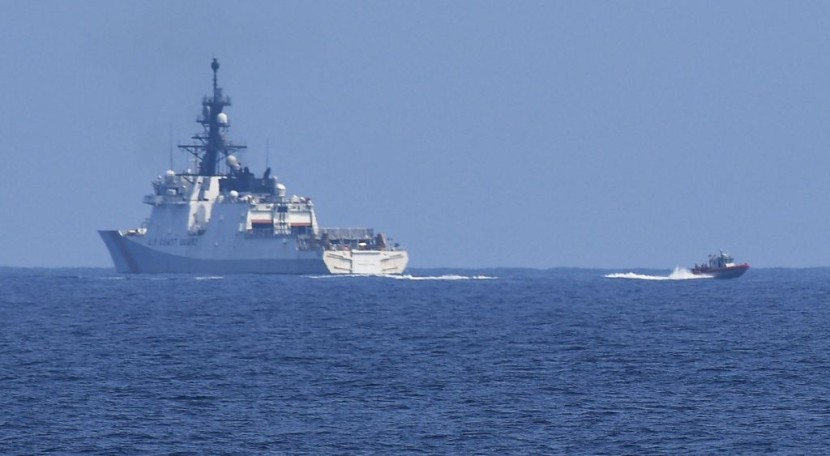China is now dealing with growing international backlash after one of its coast guard vessels used a water cannon against a Philippine boat in the South China Sea on Saturday.
Analysts say the incident escalates an already tense situation and could lead the United States and its allies to accelerate plans for joint patrols in the waterway, according to CNN.
On Second Thomas Shoal, a South China Sea feature in Manila's exclusive economic zone that China calls Renai Reef and also claims as its sovereign territory, a much smaller Philippine boat was being sprayed by a large Chinese Coast Guard ship as it attempted to deliver supplies to a garrison of Philippine marines.
The Chinese ship was also visible in images from the Philippine Coast Guard, which was escorting the resupply boats, getting perilously close to them.
Washington Reacts
By Sunday, Washington, Manila's principal friend, had denounced China's actions and reaffirmed that it would uphold its end of the mutual defense pact with the Philippines.

Allies of the US formed a unified front with Manila and Washington. Australian, Japanese, and German officials referred to China's moves as "dangerous" and "destabilizing."
The Chinese ambassador in Manila, according to Philippine President Ferdinand Marcos Jr., was presented with a diplomatic note of complaint "along with images and videos on what had happened" on Monday.
While this was going on, the Philippine Foreign Ministry and Armed Forces held a joint press conference to denounce China's use of water cannons, which they called a "dangerous and illegal practice" that put "the lives of the Filipino crew at risk in violation of humanitarian and international law."
Read also: South China Sea Tension: Philippine Coast Guard Exposes China's Aggression in Disputed Waters
Tensions Between the Philippines and China
The tension between Manila and Beijing has always been centered on the South China Sea. Beijing asserts "indisputable sovereignty" over the majority of the islands in the 1.3 million square miles South China Sea, even those hundreds of miles from the Chinese mainland.
This includes the Spratlys, also known as the Nanshas in Beijing, a group of 100 tiny islands and reefs that are also fully or partially claimed by the Philippines, Malaysia, Brunei, and Taiwan.
However, Manila refers to the region as the West Philippine Sea. It purposefully grounded the BRP Sierra Madre, a navy transport ship manned by Filipino troops, on Second Thomas Shoal in 1999 to bolster its territorial claims.
The International Permanent Court of Arbitration in the Hague, which determined in 2016 that China lacks a legal foundation to assert historic rights to the majority of the South China Sea, supports Manila's claims. Beijing has disregarded the decision.
Analysts and lawmakers in the Philippines described the incident on Saturday as an improvement over a number of Chinese-Philippine conflicts this year, which included a Chinese ship firing a laser at a Philippine vessel in February and a succession of what analyst Collin Koh called "near collisions."
Related article: US, Philippines Conduct Largest Joint Military Drills in South China Sea Despite Intensifying Tensions








